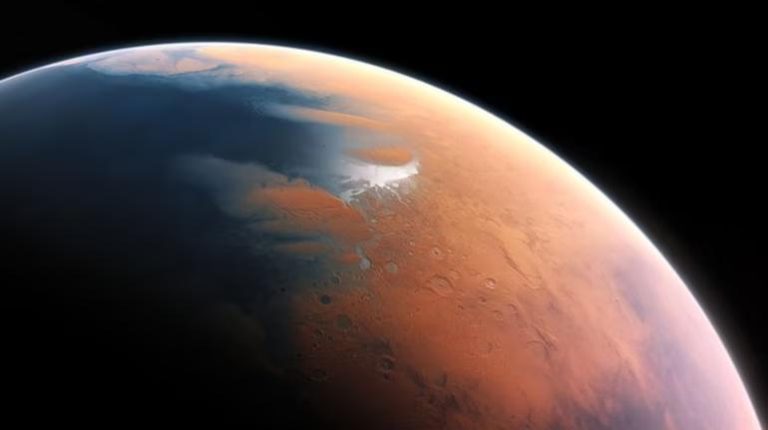
Mars may have once had rain & snowfall, finds new study
In a groundbreaking discovery, a recent study by the University of Colorado Boulder has suggested that Mars, the Red Planet, may have once experienced rainfall and snowfall, feeding valleys and channels. This finding has significant implications for our understanding of the planet’s history and the possibility of life existing on Mars in the past.
Studies have long suggested that there is evidence that at least some water existed on the surface of Mars around 4 billion years ago. However, the source of the water has not been ascertained yet. This new study provides crucial insight into the planet’s ancient climate and may shed light on the mystery of where the water came from.
According to the study, the Martian surface was once much more hospitable to life than it is today. The researchers analyzed data from NASA’s Mars Reconnaissance Orbiter and found evidence of ancient riverbeds, lakes, and even oceans on the planet. These waterways were likely fed by rainfall and snowfall, which would have created a more Earth-like environment.
The researchers used a combination of computer models and geological analysis to recreate the Martian climate of 4 billion years ago. They found that the planet’s atmosphere was much thicker and more hospitable to liquid water than it is today, which would have allowed for rainfall and snowfall to occur.
“This study is significant because it suggests that Mars may have had a more Earth-like climate in the past, which would have made it more habitable,” said Dr. Scott Guzewich, a research scientist at the University of Colorado Boulder and lead author of the study. “If we can understand what made Mars so different in the past, we may be able to learn more about the possibilities for life on the planet.”
The study’s findings are based on a detailed analysis of data from NASA’s Mars Reconnaissance Orbiter, which has been studying the planet’s surface since 2006. The orbiter has provided a wealth of information about Mars’ geology and climate, including evidence of ancient riverbeds, lakes, and even oceans.
One of the key findings of the study is the presence of “recurring slope lineae” (RSL), which are seasonal streaks of dark material that appear on Martian slopes during the warmest months of the year. These streaks are thought to be caused by the flow of briny water, which is present in the Martian soil.
The researchers used computer models to recreate the Martian climate of 4 billion years ago and found that the planet’s atmosphere was much thicker and more hospitable to liquid water than it is today. They also discovered that the Martian surface was much more geologically active than it is today, with volcanoes and tectonic activity shaping the planet’s surface.
The study’s findings have significant implications for our understanding of the possibility of life on Mars. While the planet’s surface is now a harsh and barren environment, the presence of water in the past suggests that it may have been possible for life to exist on Mars in the distant past.
“Finding evidence of ancient rivers, lakes, and oceans on Mars is a major breakthrough,” said Dr. Guzewich. “It suggests that the planet may have been more hospitable to life in the past than we previously thought.”
The study’s findings also provide new insights into the possibility of life on Mars today. While NASA’s Curiosity rover has found evidence of water on Mars, the planet’s surface is now a harsh and inhospitable environment. However, the presence of water in the past suggests that it may be possible for life to exist on Mars today, even if it is in the form of microorganisms.
The study’s findings were published in the journal Nature Astronomy and are the result of a collaboration between researchers at the University of Colorado Boulder, NASA’s Jet Propulsion Laboratory, and the University of California, Berkeley.




